
Light Wave Oven Meringue Cookie
I'm into home baking these days.^^
I'll make meringue cookies without making mistakes
"Mom, you're the best!" Listen to me!
6 serving
Within 60 minutes

Hobby_Food
- Ingredients
-
-
Eggs2ea
-
white sugar50g
-
Vinegar2drop
-
- Cooking Steps
-
STEP 1/14On a boiling pot of steam
So that the sugar melts and mixes with the whites
Stir with a spatula, stirring.
Be careful not to ripen the white.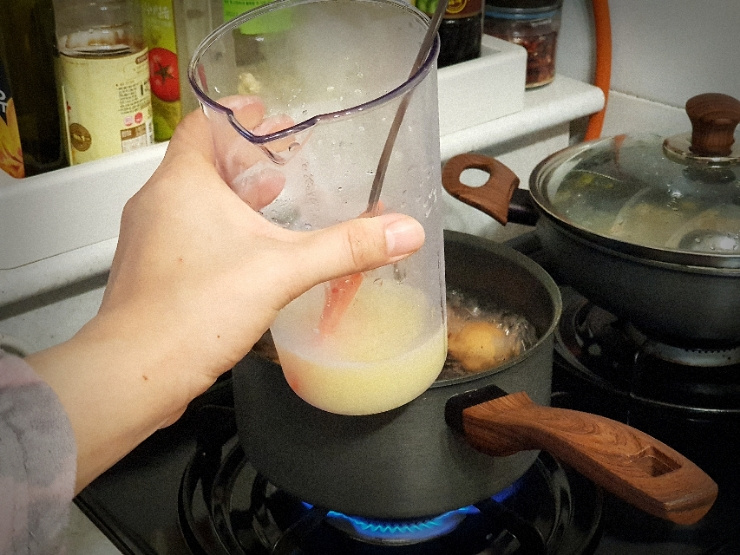 STEP 2/14If you don't hear the crunch of sugar when mixing with a spatula, now use an electric whisk to whip it.
STEP 2/14If you don't hear the crunch of sugar when mixing with a spatula, now use an electric whisk to whip it.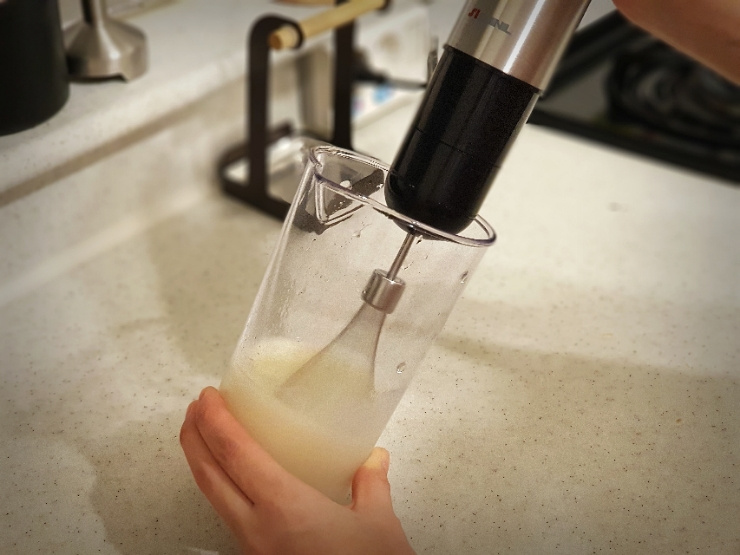 STEP 3/14If you heat it for about three minutes, it comes out as if the bubbles are flowing down.
STEP 3/14If you heat it for about three minutes, it comes out as if the bubbles are flowing down.
It's good to add lemon juice at this time, but if you don't have it, add 2 drops of vinegar and whisk it strongly.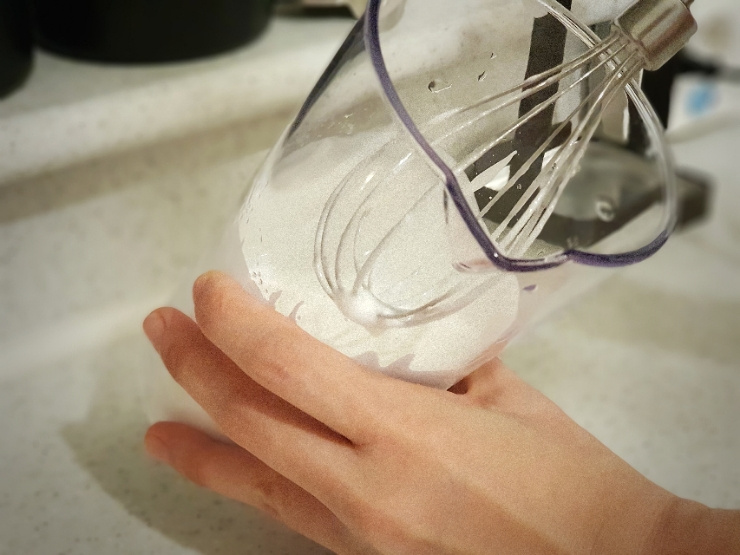 STEP 4/14The reason for adding vinegar is to make it harder.
STEP 4/14The reason for adding vinegar is to make it harder.
If you spin it for another three to five minutes, it becomes meringue as if the tip is standing pointed. STEP 5/14If you get the meringue you want, the strength of the whisk is
STEP 5/14If you get the meringue you want, the strength of the whisk is
Turn it lower and turn it more.
The reason why you turn it lightly is to take out even a little air between the meringue.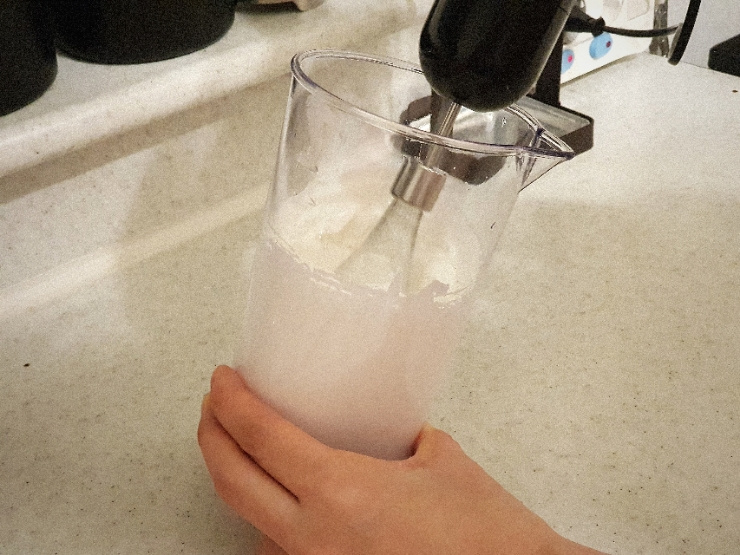 STEP 6/14I don't have a piping bag, so I made it disposable.
STEP 6/14I don't have a piping bag, so I made it disposable.
Cut a soju cup and make a pod STEP 7/14I'll tape it like this and fix it tightly
STEP 7/14I'll tape it like this and fix it tightly STEP 8/14Make a small hole in the plastic and put the paper piping in
STEP 8/14Make a small hole in the plastic and put the paper piping in
I fixed the outside with tape so that it wouldn't fall off.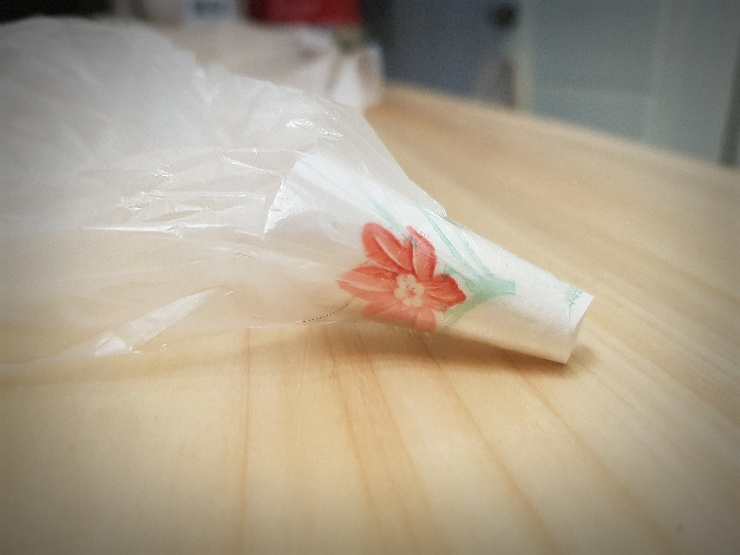 STEP 9/14When you have made a piping bag, add the finished meringue and drain the air into a 30cm shape.
STEP 9/14When you have made a piping bag, add the finished meringue and drain the air into a 30cm shape. STEP 10/14I'm going to squeeze the cookie sheet into shape
STEP 10/14I'm going to squeeze the cookie sheet into shape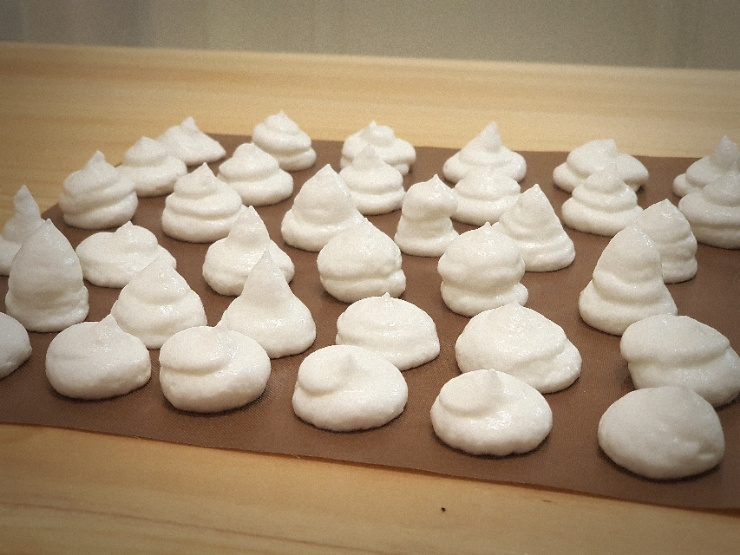 STEP 11/14Put it in a preheated light-wave oven at 125C for 20 minutes and bake it at 125C for 40 minutes.
STEP 11/14Put it in a preheated light-wave oven at 125C for 20 minutes and bake it at 125C for 40 minutes. STEP 12/14After 40 minutes, the temperature is 150C, and it's baked for 20 minutes, so the color comes out light brown and hardens.
STEP 12/14After 40 minutes, the temperature is 150C, and it's baked for 20 minutes, so the color comes out light brown and hardens.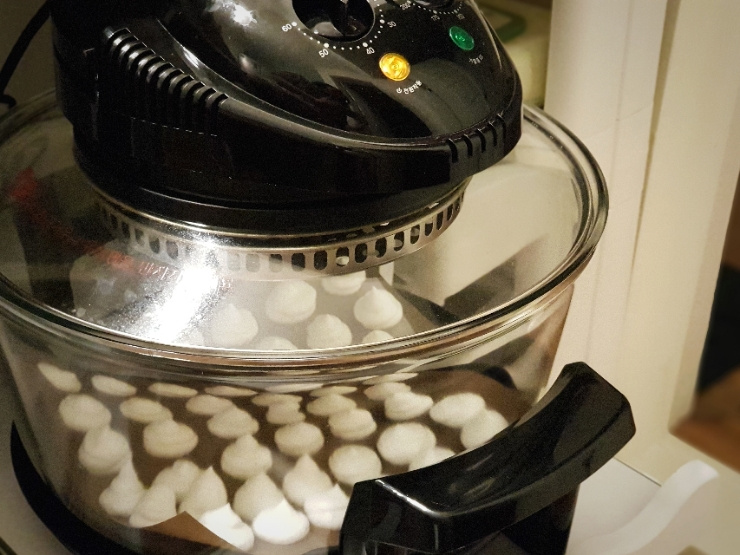 STEP 13/14When it's done, lift up the sheet
STEP 13/14When it's done, lift up the sheet
Let cool at room temperature.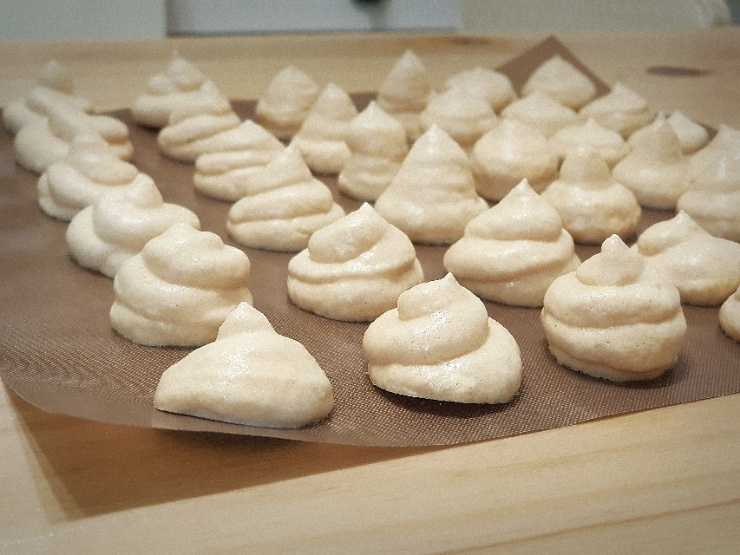 STEP 14/14When it cools, you can see the crispy meringue cookie.
STEP 14/14When it cools, you can see the crispy meringue cookie.
Put the meringue cookie in a bowl
Have a bite with coffee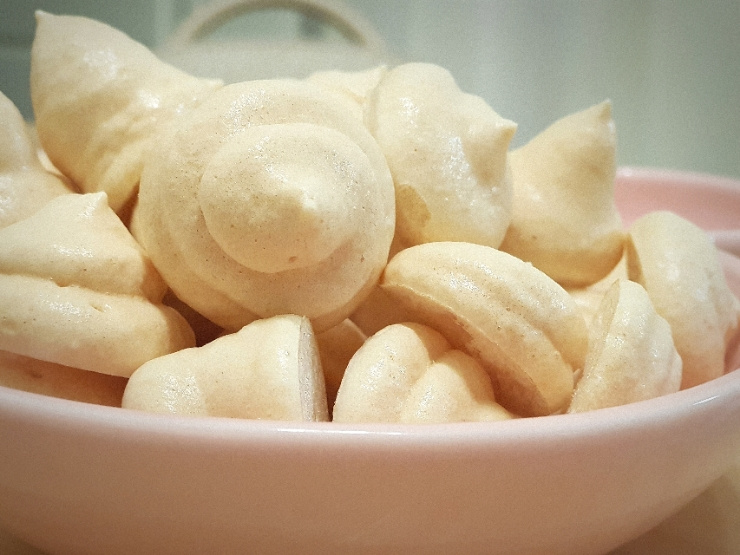 When you make meringue cookies, if you bake them short, they can be hard for a while, but they collapse later. Bake at a constant temperature of 100-125 degrees for a long time, and then cook it short at 150 degrees. (It is said to bake for 2 hours at 100 degrees with a regular oven.)
When you make meringue cookies, if you bake them short, they can be hard for a while, but they collapse later. Bake at a constant temperature of 100-125 degrees for a long time, and then cook it short at 150 degrees. (It is said to bake for 2 hours at 100 degrees with a regular oven.)
- Bulgogi Recommended recipe
-
-
1
 Golden recipe for pork bulgogi. Soy sauce pork bulgogi for a mea4.85(27)
Golden recipe for pork bulgogi. Soy sauce pork bulgogi for a mea4.85(27) -
2
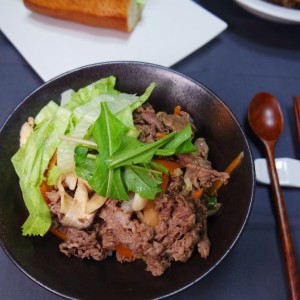 Yoon's Kitchen Bulgogi Sauce, 3 kinds of bulgogi dishes4.95(40)
Yoon's Kitchen Bulgogi Sauce, 3 kinds of bulgogi dishes4.95(40) -
3
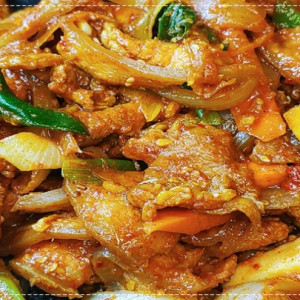 Making pork and red pepper paste bulgogi delicious and simple4.87(23)
Making pork and red pepper paste bulgogi delicious and simple4.87(23) -
4
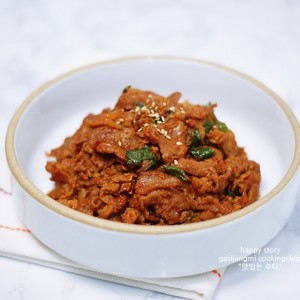 Pork bulgogi! (Pork dish)4.95(21)
Pork bulgogi! (Pork dish)4.95(21)
-
- Japchae Recommended recipe
-
-
1
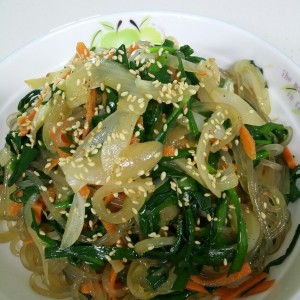 Meatless japchae. Chives japchae4.93(15)
Meatless japchae. Chives japchae4.93(15) -
2
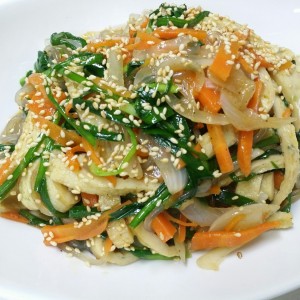 Fish cake japchae, fish cake and chives, super simple japchae4.70(27)
Fish cake japchae, fish cake and chives, super simple japchae4.70(27) -
3
 Let's captivate your appetite with the holiday food's ever-prese4.83(12)
Let's captivate your appetite with the holiday food's ever-prese4.83(12) -
4
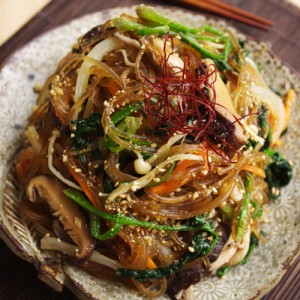 Mushroom japchae that can be a great side dish4.82(22)
Mushroom japchae that can be a great side dish4.82(22)
-